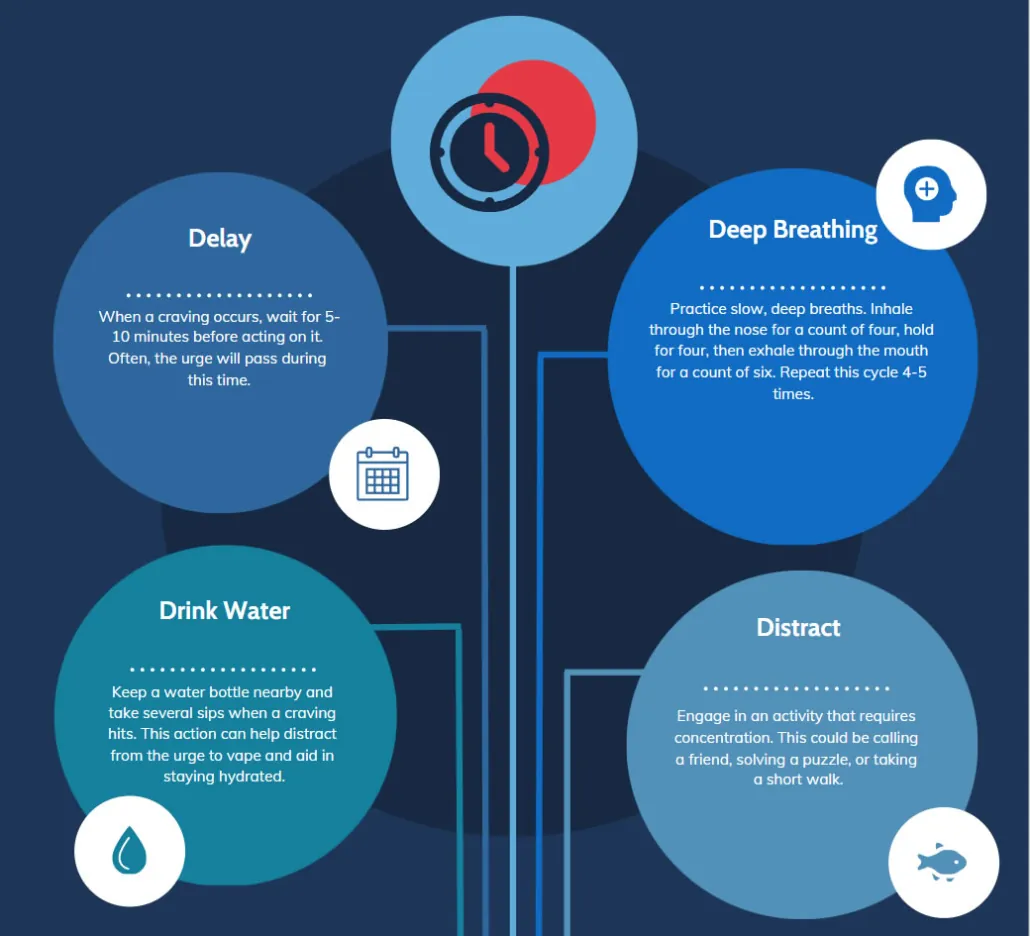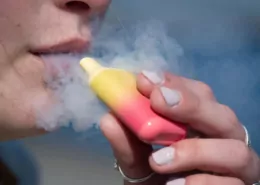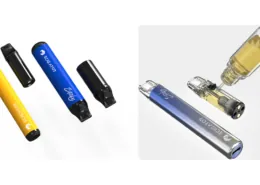Guide to Quitting Vaping: Proven Strategies for Success
Quitting vaping is a major step towards better health and reclaiming control over your life. While vaping might seem like a less harmful alternative to smoking, giving up nicotine entirely is the best choice for your well-being. This comprehensive guide will walk you through the process of quitting vaping, providing detailed strategies and expert advice to help you succeed.
Determine Your Motivation
Before delving into the ‘HOW‘ of quitting vaping, it’s crucial to understand the ‘WHY‘. Understanding and clearly defining your reasons for quitting vaping is crucial for maintaining long-term motivation. Common reasons include:
- Health Concerns: Vaping can have detrimental effects on lung and heart health. Research indicates that e-cigarette use may lead to inflammation in the lungs and increase the risk of cardiovascular issues.
- Financial Impact: The cost of vaping adds up quickly. On average, a regular vaper spends between $600 and $840 annually on vaping supplies. This significant sum could be redirected towards other personal goals or savings.
- Nicotine Dependence: Nicotine, the primary addictive substance in e-cigarettes, can have lasting effects on brain development, particularly in individuals under 25 years old.
To keep yourself motivated, write down your reasons and keep them visible. This could be on your phone’s lock screen or as a note on your bathroom mirror. Refer to these reasons whenever you feel tempted to vape, reminding yourself of the benefits of quitting.
Preparation – The Foundation for Success
Proper preparation is key to successfully quitting vaping. This initial step involves several important actions:
1) Set a Quit Date
Choosing a specific date to stop vaping helps solidify your commitment. Give yourself enough time to prepare, typically 1-2 weeks from when you decide to quit. Avoid dates that coincide with high-stress events or situations. Consider selecting a date with personal significance, such as a birthday or anniversary, which can add extra motivation. Once you’ve set the date, mark it on your calendar and start preparing mentally and physically for this important day.

2) Identify Personal Motivations
Recognizing triggers is the final key component of preparation. Identifying personal motivations is another crucial preparatory step. Understanding the personal reasons for quitting can provide crucial motivation during challenging moments. Create a detailed list of reasons for quitting vaping, being as specific and personal as possible. For example, “To have more energy to play with my children” is more powerful than a general “To be healthier.” Place this list in frequently viewed locations, such as on the refrigerator or as a phone wallpaper, for regular reminders.
3) Recognize Your Triggers
Identifying situations that prompt vaping is essential for developing effective coping strategies. Keep a detailed vaping diary for at least one week, noting the time, location, and circumstances surrounding each instance of vaping. Pay attention to emotional states that precede vaping. Common triggers include:
- Emotional states: Stress, anxiety, boredom, loneliness, or even happiness can trigger the urge to vape.
- Social situations: Being around friends who vape or attending social events where vaping is common.
- Specific times of day: Many people have routines, such as vaping first thing in the morning or after meals.
- Activities: Certain activities like driving, watching TV, or taking work breaks might be associated with vaping.
Choosing an Appropriate Quitting Strategy
There is no universal approach to quitting vaping. Different methods may be more effective for different individuals. Three common strategies to consider are the cold turkey method, gradual reduction, and nicotine replacement therapy (NRT).
1) Cold Turkey Method
The cold turkey method involves completely stopping vaping without any gradual reduction or aids. You pick a quit date and from that day forward, you don’t vape at all. It’s like ripping off a band-aid – quick and decisive.
2) Gradual Reduction
Gradual reduction involves slowly decreasing nicotine intake over time. You can do this by either reducing the nicotine strength in your e-liquid or by gradually decreasing the number of times you vape each day. For example, you might start by switching to a lower nicotine concentration every week, or by increasing the time between vaping sessions.
3) Nicotine Replacement Therapy (NRT)
NRT can help manage withdrawal symptoms and cravings. NRT provides small, controlled doses of nicotine without the other harmful chemicals found in vape juice. Options include nicotine gum, patches, lozenges, nasal sprays, and inhalers. You typically start with a dose that matches your current nicotine intake and gradually reduce it over time.
Options include:

- Nicotine gum: Provides short-acting nicotine relief. Chew until you feel a tingling sensation, then park the gum between your cheek and gum.
- Nicotine patches: Offer a steady release of nicotine throughout the day. Apply a new patch each morning to a hairless area of skin.
- Nicotine lozenges: Dissolve in the mouth, providing short-term craving relief.
- Nicotine inhalers: Mimic the hand-to-mouth action of vaping, which can be helpful for those who miss the physical habit.
- Nicotine nasal sprays: Provide fast-acting relief for intense cravings.
Consult with a healthcare provider to determine the best NRT option and dosage for your situation. Remember, it’s crucial not to vape while using NRT, as this can lead to nicotine overdose.
It’s important to note that combining methods or trying different approaches may be necessary to find the most effective strategy for each individual.
Developing Coping Strategies for Cravings
Cravings are a common challenge when quitting vaping. Implementing effective coping strategies can significantly increase the chances of success. Here are some proven techniques:
1) The 4 D’s Strategy
This method provides a structured approach to managing cravings:

- Delay: When a craving occurs, wait for 5-10 minutes before acting on it. Often, the urge will pass during this time.
- Deep Breathing: Practice slow, deep breaths. Inhale through the nose for a count of four, hold for four, then exhale through the mouth for a count of six. Repeat this cycle 4-5 times.
- Drink Water: Keep a water bottle nearby and take several sips when a craving hits. This action can help distract from the urge to vape and aid in staying hydrated.
- Distract: Engage in an activity that requires concentration. This could be calling a friend, solving a puzzle, or taking a short walk.
2) Habit Replacement
Habit replacement can also be beneficial. Replace the physical action of vaping with healthier alternatives like using stress balls or fidget toys to keep hands occupied, chewing sugar-free gum or mints to satisfy oral fixations, or snacking on crunchy vegetables like carrot sticks or celery to mimic the hand-to-mouth action.
3) Environmental Management
Creating a vape-free environment can significantly support quitting efforts. Remove all vaping devices, e-liquids, and related accessories from living and working spaces. Identify and avoid situations or locations that trigger the urge to vape, especially during the initial quitting phase. Consider creating a designated relaxation area at home, equipped with comfort items like plants, comfortable seating, and calming music. Use this space when experiencing strong cravings or stress.
Building a Support Network
Having a strong support system can greatly enhance the chances of successfully quitting vaping. Consider the following strategies will building your own support network:
- Inform close friends and family members about the decision to quit vaping. Explain how they can offer support, such as not vaping in your presence or providing encouragement during difficult moments.
- Join online communities or forums dedicated to quitting vaping. These platforms offer opportunities to share experiences, seek advice, and find motivation from others on similar journeys.
- Utilize quit-vaping applications. Many apps provide features such as tracking vape-free days, calculating money saved, and offering daily motivation.
- Consider seeking professional support from healthcare providers or addiction counselors. These experts can provide personalized advice and may recommend additional resources or treatments.

Implementing a Reward System
Acknowledging progress and celebrating milestones can help maintain motivation throughout the quitting process. Consider establishing a reward system for reaching certain milestones, such as one day, one week, or one month vape-free. Using the money saved from not purchasing vaping supplies to fund these rewards can provide additional motivation.
It’s important to recognize that setbacks can occur during the quitting process. If a relapse happens, avoid self-criticism as negative self-talk can hinder progress. Instead, analyze the situation that led to the setback and use this information to strengthen future coping strategies. Reaffirm the commitment to quitting by reviewing the list of personal motivations for quitting. Seek support from the established network or a professional if needed.
Understanding Withdrawal Symptoms and the Benefits of Quitting
As the body adjusts to the absence of nicotine, various withdrawal symptoms may occur, including irritability, difficulty concentrating, increased appetite, headaches, and fatigue. It’s crucial to remember that these symptoms are temporary, typically peaking within the first week and subsiding over time. Staying hydrated, getting adequate rest, and engaging in light exercise can help manage these symptoms.
Focusing on the positive outcomes of quitting can provide ongoing motivation. Benefits include improved lung function and easier breathing, enhanced cardiovascular health, increased energy levels, improved sense of taste and smell, financial savings, and freedom from nicotine dependence. These benefits begin to manifest within hours of quitting and continue to improve over time.
Conclusion
Quitting vaping is a significant step towards improved health and well-being. While the journey may present challenges, with proper preparation, support, and perseverance, it is entirely achievable. Remember that every individual’s path to quitting is unique, and it may be necessary to adjust strategies along the way. For those embarking on this journey, stay committed to the goal and don’t hesitate to seek additional support when needed. A healthier, vape-free future awaits.
- Bestselling Vapes in UK After Disposable Ban: What to Stock 2025 - August 8, 2025
- Argentina Debates Stricter Vape Laws Amid Prohibition Failures - August 8, 2025
- Nigeria Advocacy Group Urged to Hike Tobacco & Vape Tax by 100% - August 8, 2025








